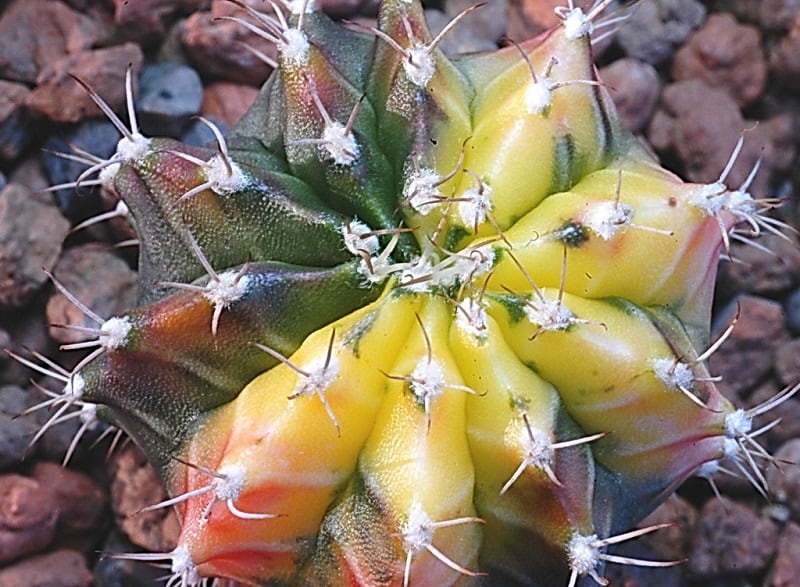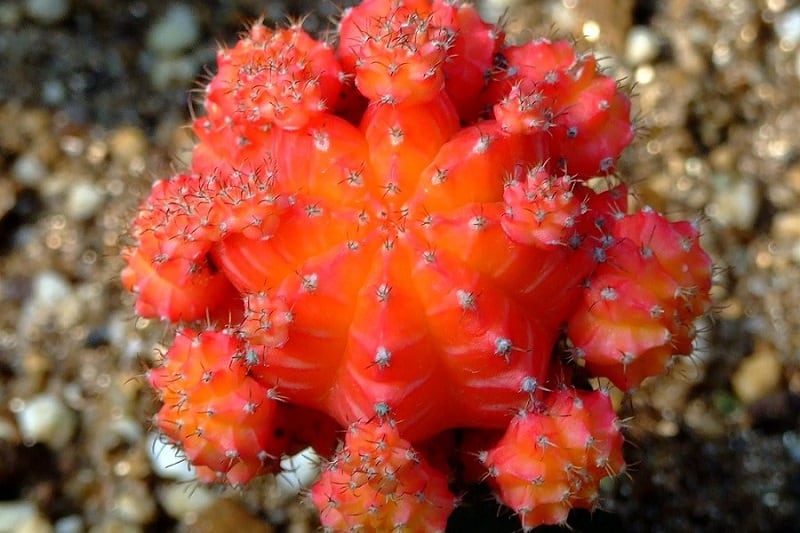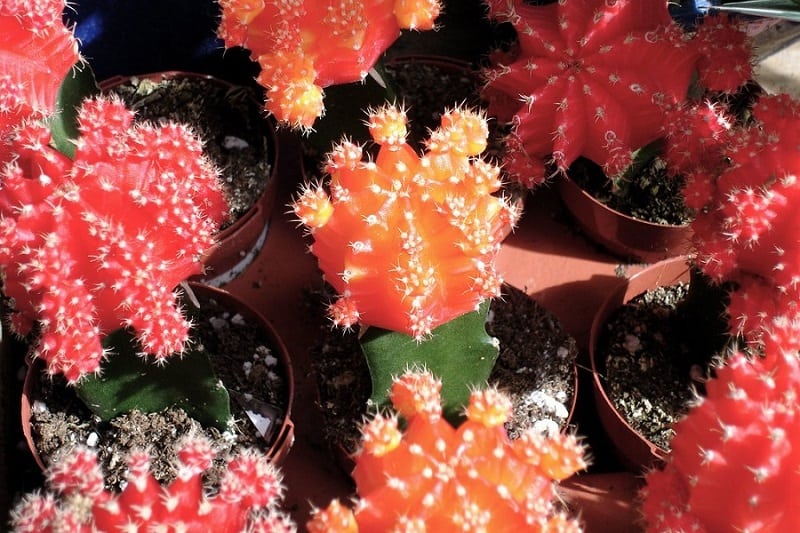Exploring the Growth Potential of Moon Cactus
Meet the Gymnocalycium mihanovichii, a unique cactus that thrives by attaching itself to another cactus. Donned in a vibrant red hue and adorned with elegant white spines, it has earned the endearing nickname of “moon cactus.” This extraordinary plant hails from Argentina and Paraguay, where it flourishes in its natural form.
But here’s an interesting tidbit: when people mention “moon cactus,” they often refer specifically to the yellow and orange varieties. For a more inclusive term, many opt for the name “neon cactus.” Keep in mind that the cultivar name ‘Hibotan’ is often associated with the first introduction of the striking orange-red variant, but it’s also commonly referred to as ‘Red Cap’ or ruby cactus.
Today, you can find this captivating cactus in an array of at least 16 different shades, each boasting its own unique charm. So, let’s delve deeper into the enchanting world of the Gymnocalycium mihanovichii and discover the wonders it holds.

Contents
Moon Cactus: The Cactus with Red Bulb
The moon cactus is not just one cactus, but actually a combination of two different cacti. The moon cactus itself is a special kind that doesn’t have the green pigment called chlorophyll, which plants use to make food from sunlight. That’s why it needs to be grafted onto another type of cactus that can provide it with nutrients. Usually, the moon cactus is grafted onto a Myrtillocactus or Hylocereus cactus. The result is a fascinating cactus with a red bulb.
The Gymnocalycium mihanovichii, the cactus plant that the moon cactus is grafted onto, originally comes from Argentina and Paraguay. It has a round body that can grow up to five centimeters in diameter. Depending on the subspecies, it can come in different colors and has short thorns on its narrow ribs. The red specimens are quite popular and often remind people of strawberries.

How Big do Moon Cactus Get?
Moon cacti don’t usually grow very tall, reaching a maximum height of around 12 inches (30.5 cm), depending on the type of base cactus they are grafted onto. These grafted cacti are usually small and are rarely found in pots larger than four inches in diameter. The tops of the cacti are usually about as wide as four inches, with each individual ball being about the size of a golf ball. They have plenty of smaller cacti growing from them and tend to branch out freely.
How Long do Moon Cactus Live?
Unlike some other types of cacti that can live for many decades, the moon cactus has a relatively short lifespan. The base cactus that it’s grafted onto is often unable to support the entire plant for more than a couple of years.
Moon Cactus Care Guide

Taking care of your moon cactus is easy, especially if it’s the brightly colored variety grafted onto Hylocereus. Here are some simple guidelines to follow:
- Location: Place your moon cactus in a bright spot where it can enjoy indirect sunlight. Avoid exposing it to the intense midday sun during summer. It will be happy with morning, evening, and winter sun.
- Soil: It’s best to use commercially available cactus soil for your moon cactus. Avoid using the coarse-fiber substrate that it’s often sold with, as it’s not suitable for long-term cultivation. If you prefer to make your own soil mix, you can combine two parts potting soil with one part pumice gravel or clay granulate, and one part bird sand.
- Watering: Allow the soil to dry out slightly between watering. Avoid overwatering, as the moon cactus doesn’t like waterlogged soil.
- Fertilizing: You can start fertilizing your moon cactus at least one year after purchasing or repotting it. Use cactus fertilizer and apply it every 4 to 8 weeks from April to September.
- Temperature: The Gymnocalycium mihanovichii can be kept at room temperature throughout the year. During winter, make sure the temperature doesn’t drop below 15°C (59°F) for extended periods.
Propagating Moon Cactus
If you want to propagate your moon cactus, you can do so by removing and grafting the daughter plants. You can also find seeds for the natural form of the cactus in specialized stores if you’re interested in growing it from scratch.
